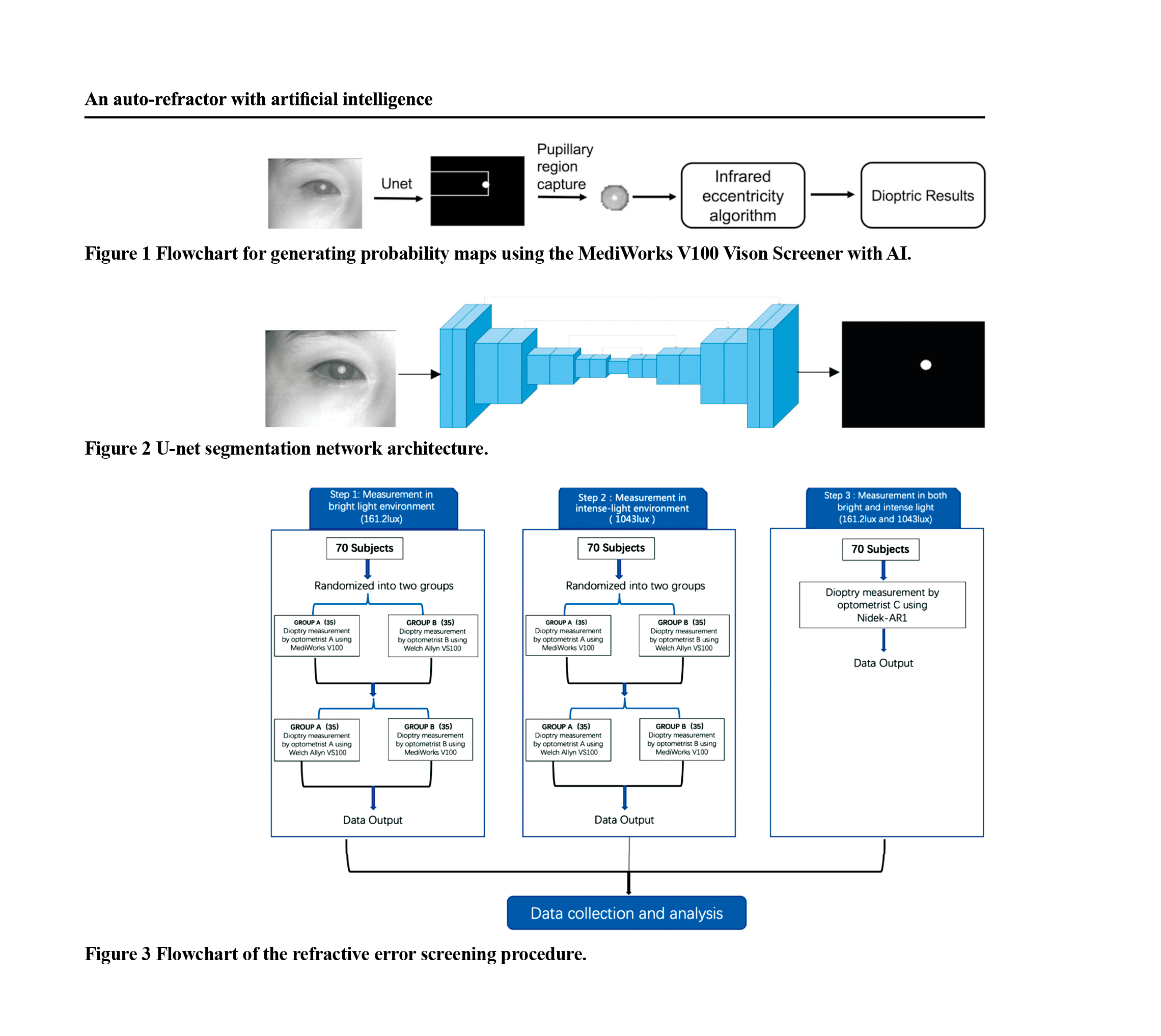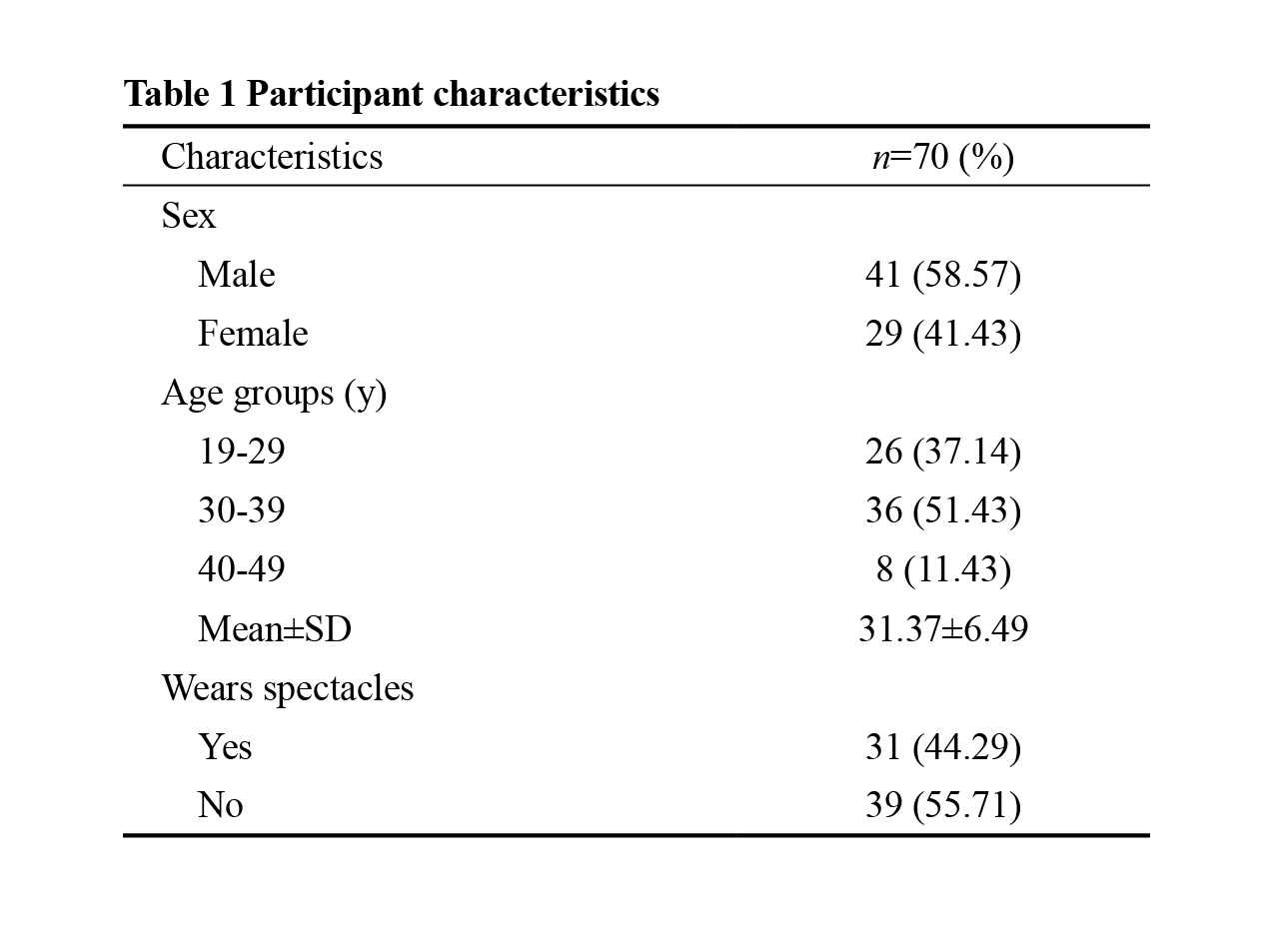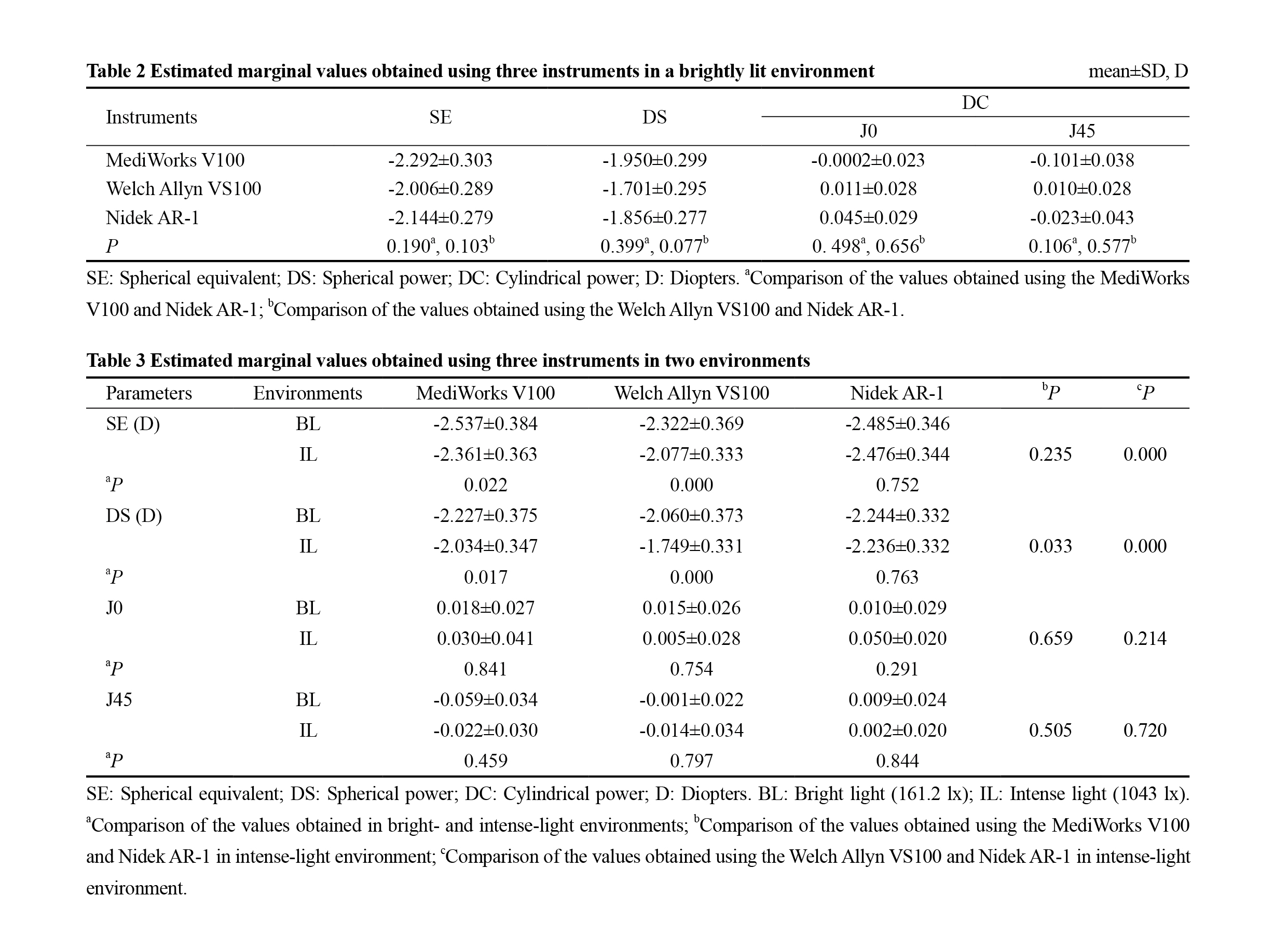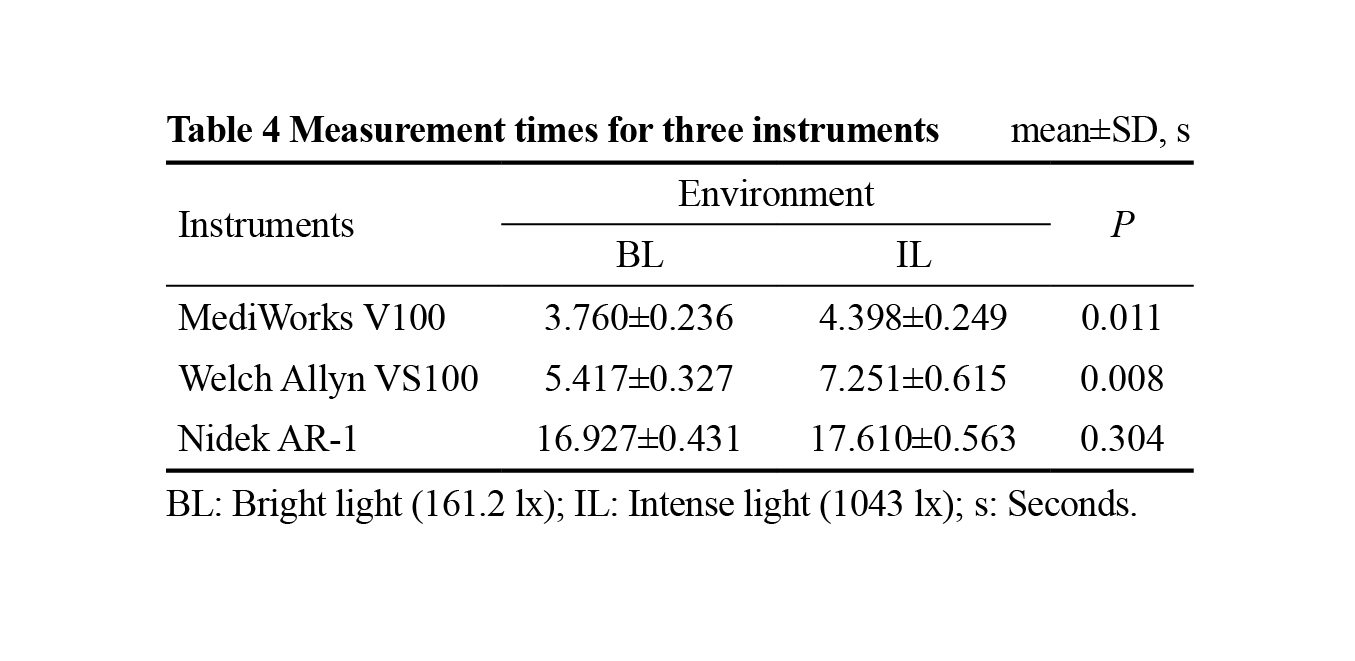Abstract
● AIM: To evaluate the accuracy, efficiency, and reliability of a handheld infrared eccentric autorefractor (hICA) with artificial intelligence (AI) by comparing its refraction measurements to those recorded using hICA and a clinical table-mounted automatic refractor (TAR).
● METHODS: A cross-sectional study using three optometers, including hICA with or without AI and TAR, for refractometry of adults (aged 19-49 years old) with no signs of ocular disease or trauma in the absence of cycloplegia. Right and left eye refraction data were recorded, including the spherical equivalent (SE), diopter of spherical power (DS), diopter of cylindrical power (DC) decomposed into vectors J0 and J45, and measurement times. To avoid analytical difficulties associated with the interdependence of observations between eyes from the same individual, the Generalized Estimation Equation was used to compare the SE, DS, J0 and J45 measurements, and the times thereof, among the different groups. The intraclass correlation coefficient (ICC) and Spearman’s rank correlation coefficient were used to evaluate correlations among the measurements recorded by the three different instruments. Bland-Altman were used to analyze the precision of the equipment by the agreement.

●RESULTS: A total of 70 patients (140 eyes; mean age: 31.37y; range: 19-49y) were assessed using refractometry. In a brightly lit environment, there was no significant difference between the mean SE recorded using TAR and that recorded using hICA with AI or without AI (both P>0.05). In an intense-light environment, hICA equipped with AI showed a better detection rate than without AI. Light intensity had a greater effect on dioptric measurements recorded using hICA without AI (P<0.001) than on those recorded using the one equipped with AI (P<0.05). Measurement times varied significantly between the different light intensities and instruments (P<0.05).



● CONCLUSION: For the normal human eyes, AI may improve the accuracy, efficiency, and reliability of measurements recorded using hICA in various light environments.
Reference: Cao Y T , Che D Y , Pan Y L , et al. Artificial intelligence improves accuracy, efficiency, and reliability of a handheld infrared eccentric autorefractor for adult refractometry[J].International Eye Journal : English, 2022 ( 004 ) : 015.